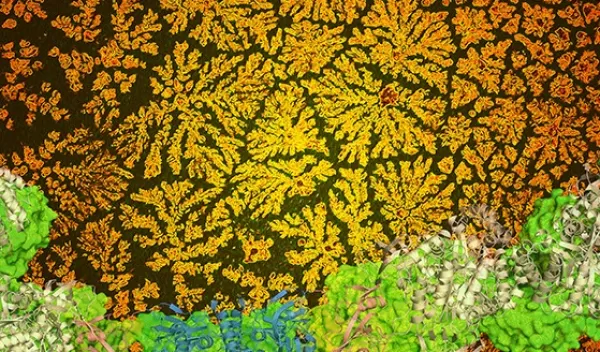
New technique helps engineer water filters, human tissues
Scientists at Rutgers University have developed a technique to turn proteins into never-ending patterns that look like flowers, trees or snowflakes. The study, which appears in the journal Nature Chemistry, describes a method that could have applications in water filters and human tissue engineering.
"Biomolecular engineers have been working on modifying the building blocks of life -- proteins, DNA and lipids -- to mimic nature and form interesting and useful shapes and structures," said senior author Sagar Khare. "Our team developed a framework for engineering existing proteins into fractal shapes."
In nature, building blocks such as protein molecules are assembled into larger structures for specific purposes. A classic example is collagen, which forms connective tissue in our bodies and is strong and flexible because of how it is organized. Tiny protein molecules assemble to form structures that are scaled up and can be as long as tendons.
The scientists used protein engineering software to design proteins that bind to each other; they form fractal, tree-like shapes in response to a biological stimulus, such as that in a cell, tissue or organism. The researchers can also manipulate the dimensions of the shapes, so they resemble flowers, trees or snowflakes, which are visualized using special microscopy techniques.
That could lead to new technologies such as filters for bioremediation, which uses biological molecules to remove herbicides from tainted water, or synthetic matrices to help study human disease or aid tissue engineering to restore, improve or preserve damaged tissues or organs.
"Approaches like the one used in this study, which apply new computational methods to important biophysical problems, highlight research funded by NSF's Division of Molecular and Cellular Biosciences," says NSF program director Wilson Francisco.
The research is also funded by NSF's Division of Chemistry.


